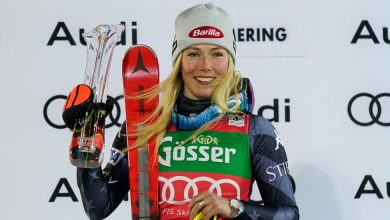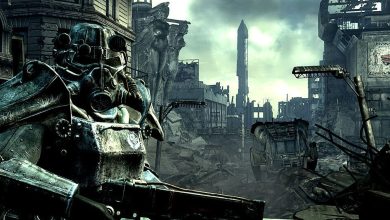Hobie Billingsley, Coach of a Diving Dynasty, Dies at 95

Hobie Billingsley, who taught himself to dive from charts on the wall of a Y.M.C.A. before becoming a national champion in the sport and then a celebrated coach, forging a national diving dynasty at Indiana University and gold medal winners in the Olympics, died on Saturday. He was 95.
His death was announced by Indiana University’s athletics department. It did not say where he died.
In the 1930s and ’40s, Ohio State, coached by Mike Peppe, produced America’s best divers, and often the world’s. One was Billingsley, who as a freshman won national collegiate titles for Ohio.
From 1959 through 1989, he coached the divers at Indiana University, working with James (Doc) Councilman, the eminent swimming coach there. In Billingsley’s 31 seasons in Bloomington, his divers won 115 national titles, including six N.C.A.A. championships, as Indiana replaced Ohio State as the collegiate diving leader.
Among his divers were Ken Sitzberger and Lesley Bush, both of whom won gold medals at the 1964 Olympics in Tokyo, and Cynthia Potter, who holds the record of 28 United States women’s titles. He also coached Mark Lenzi, a former high school wrestler and sometime diver, who won an Olympic gold medal in 1992 in Barcelona.
Billingsley was a fast-talking extrovert, peppery and tireless. “He’s sort of a renegade, a crusader who will try anything,” Bob Clotworthy, an Olympic diving champion and coach, told Sports Illustrated in 1966. “People resent someone who is progressive, and Hobie is progressive.”
As Sports Illustrated explained: “Billingsley’s progressive thoughts concerning the laws of motion as they apply to diving are the paramount issue in a sport that, before he showed up, had drifted along as unscientifically as a swan on a summer lake. In his coaching, the superscientific Billingsley speaks about linear motion, transitory motion and double-axis displacement so easily and convincingly that one would never suspect he got a 22 on his college physics final.”
Great trust and rapport is needed between diver and coach because almost every dive has imperfections, and coaches want to point them out to their divers while not discouraging them. Billingsley did that well, and his divers loved him.
His first national champion was Rick Gilbert, in 1962. As Gilbert recalled, “Hobie sold me on Indiana University, what he planned to do and, most of all, on Hobie Billingsley.”
Gilbert became the swimming and diving coach at Cornell. Dozens of Billingsley’s pupils formed the next generation of American diving coaches.
Hobart Sherwood Billingsley was born on Dec. 2, 1926, in Erie, Pa. (Some sources list his birth year as 1927, but a draft registration card indicates that he was born in 1926.) He disliked his full first name so much that he never used it and, by his account, tried to change it.
His family was poor, and he remembered sneaking through alleys so that no one would see him bringing home free government-surplus food. Another of his often-repeated boyhood memories was going to the local Y.M.C.A. in Erie and learning to dive by studying charts on the walls.
He became the first high school diver to win a medal in an Amateur Athletic Union national championship, finishing third. He won an athletic scholarship to Ohio State, but after his freshman year he considered transferring to Yale Divinity School. Instead, he was called up by the Army and served two years.
In 1947 Billingsley returned to Ohio State, where he was a diver, gymnast and cheerleader, and earned a degree in physical education in 1951. In 1953, he received a master’s degree from the University of Washington, also in physical education.
His first coaching jobs were in high schools in California and Michigan, from 1953 to 1957, overseeing swimming, diving and gymnastics programs and teaching physical education. His original starting salary was $3,900 for teaching (the equivalent of about $37,000 today) and $500 for coaching.
He made ends meet by doing a comedy diving and a trampoline show with Bruce Harlan, an Olympic diving champion, until Harlan’s death in 1959. (Harlan was taking part in a diving exhibition in Fairfield, Conn., and while helping to dismantle the diving tower fell 27 feet to his death.) Billingsley then teamed up with Dick Kimball, another coach, and for 15 summers they toured the United States, Canada and the Far East, with a side trip to Bermuda.
Harlan had become the first full-time diving coach in the American college ranks when Michigan hired him in 1957; a month later, Billingsley became the second when Ohio University, in Athens, hired him. He moved to Indiana after two years at Ohio.
Billingsley coached five Olympic teams — the United States women in 1968, the U.S. men in 1972, Austria in 1976 and Austria and Denmark in 1980. After the 1972 Olympics, when the American men lost the three-meter springboard title for the first time since 1912, he was so distraught that he wandered around Europe alone for almost a month and decided to quit coaching before changing his mind and returning home.
Billingsley was voted the American diving coach of the year seven consecutive years, (1964-70), and elected to the International Swimming Hall of Fame in Fort Lauderdale, Fla., in 1983. He served as an Olympic diving judge in 1992. He was the subject of a 1980 documentary film, “Hobie’s Heroes.”
After retiring as a coach, he remained at Indiana as a teacher, recruiter and fund-raiser. He ran a summer diving camp and coached coaches in the United States and abroad.
Information about his survivors was not immediately available.
Frank Litsky, a longtime Times sportswriter, died in 2018. William McDonald contributed reporting.





